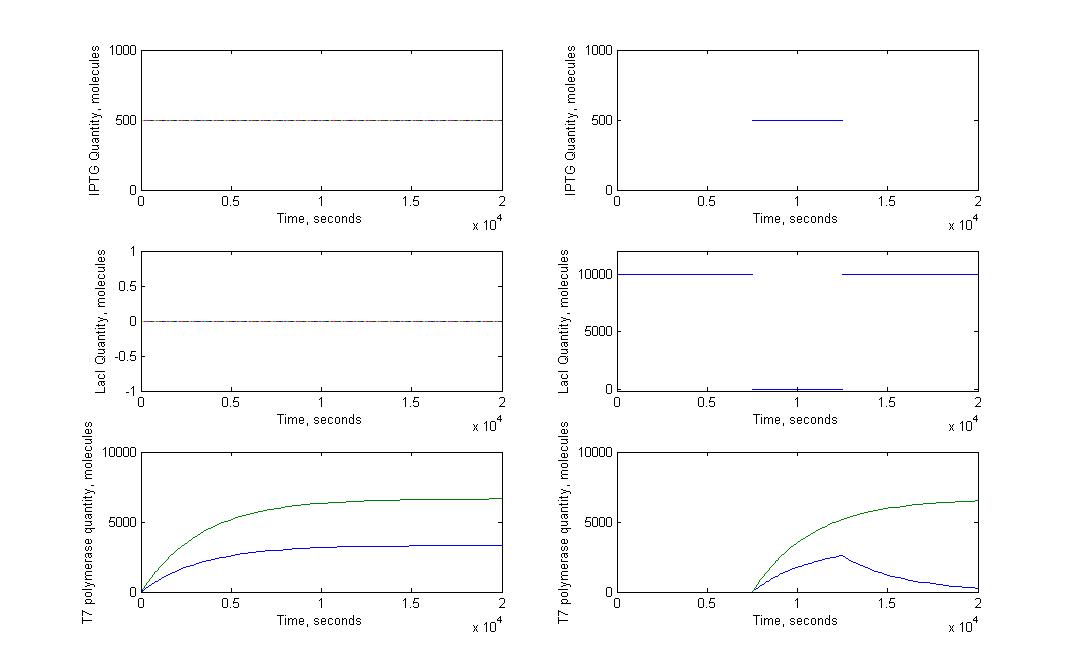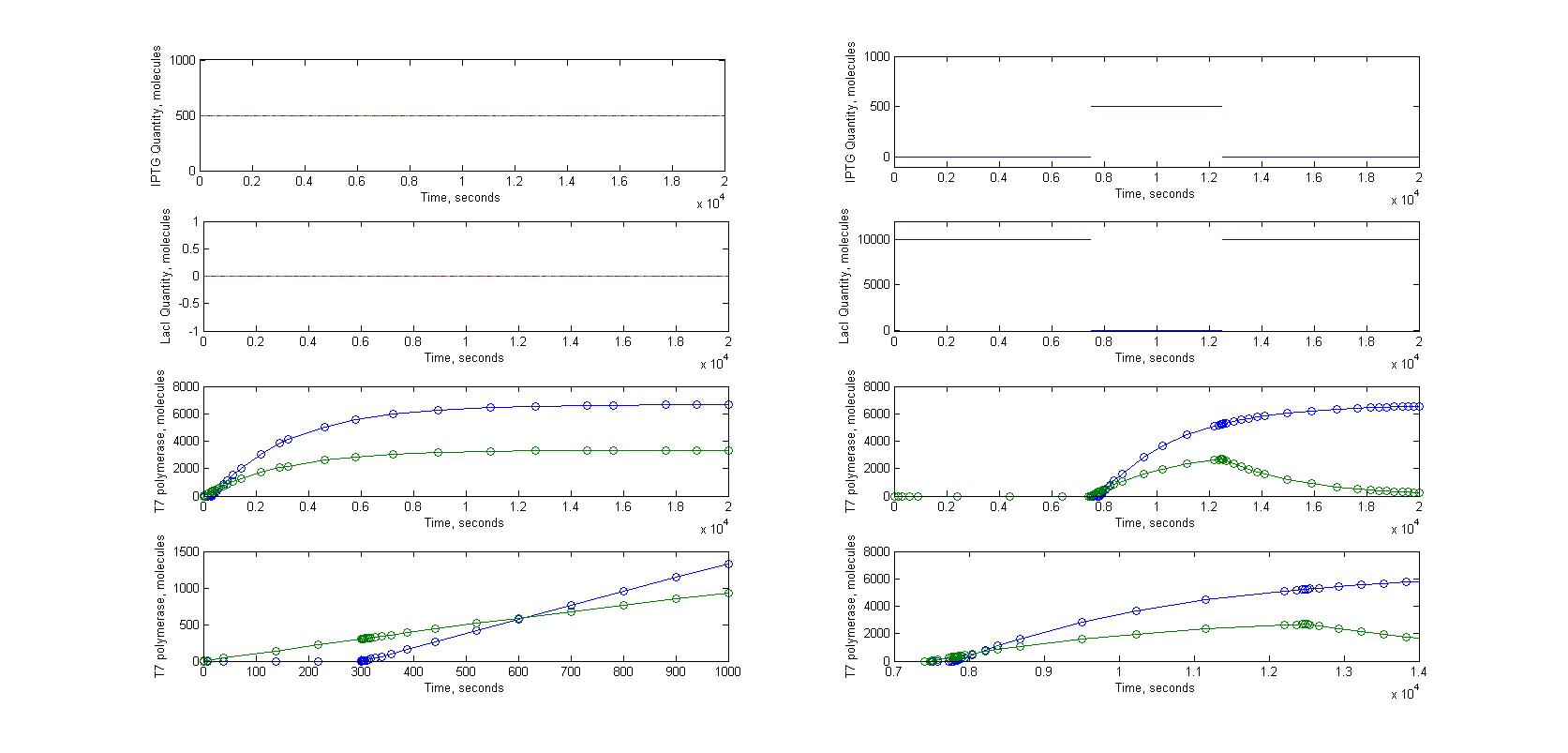Team:Paris Bettencourt/Modeling
From 2011.igem.org
(Difference between revisions)
(→tRNA amber system) |
|||
| Line 22: | Line 22: | ||
This system can be modelled after making some important assumptions : | This system can be modelled after making some important assumptions : | ||
| - | * All the molecules in the cell are uniformly distributed. | + | * All the molecules in the cell are uniformly distributed. $\frac{2}{3}$ |
* The number of tRNA amber diffused through the nanotubes is much more smaller than the one of the mRNA. | * The number of tRNA amber diffused through the nanotubes is much more smaller than the one of the mRNA. | ||
| - | |||
| - | |||
| - | |||
== Master/Slave == | == Master/Slave == | ||
Revision as of 14:26, 25 July 2011

Contents |
Modeling
Direct observation
Characterization
T7 system
tRNA amber system
The amber suppressor tRNA diffusion. The idea of the system is to pass tRNA amber molecules through the nanotubes. At every moment of time in the receiver cell there is a certain amount of transcripted mRNA-T7 among the others mRNA. The behavior of tRNA amber arrived to a receiver cell is random, so to describe its interaction with mRNA-T7 and its futher translation we can reason in terms of probability.
This system can be modelled after making some important assumptions :
- All the molecules in the cell are uniformly distributed. $\frac{2}{3}$
- The number of tRNA amber diffused through the nanotubes is much more smaller than the one of the mRNA.
Master/Slave
Bi-directional communication
 "
"




